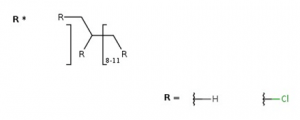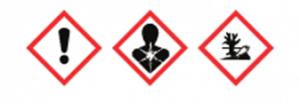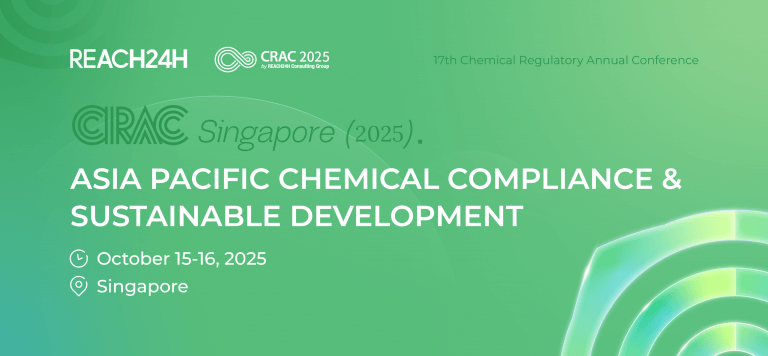Introduction
As of January 1, 2024, China has officially banned the production, processing, use, import, and export of Short-Chain Chlorinated Paraffins (SCCPs). This move marks SCCPs as one of the first substances eliminated under the List of New Pollutants for Priority Management (2023). This article explores key aspects of the SCCP phase-out, including an overview of the substance, reasons for elimination, associated hazards, domestic and international regulatory trends, and current industry compliance dynamics.
What Are Short-Chain Chlorinated Paraffins (SCCPs)?
SCCPs refer to linear chlorinated hydrocarbons with carbon chain lengths from C10 to C13 and chlorine content ranging from 40% to 70%. Due to their low volatility, flame retardancy, good electrical insulation properties, and low cost, SCCPs are widely used in leather coatings, PVC, chlorinated rubber plasticizers, and flame retardants in plastics and textiles.
Basic Information of SCCPs:
| Item | Details |
| Common Name | Short-Chain Chlorinated Paraffins (SCCPs) |
| Chemical Name | Alkanes, C10–13, chloro |
| CAS Numbers | 85535-84-8, 68920-70-7, 71011-12-6, 85536-22-7, 85681-73-8, 108171-26-2, etc. |
| Molecular Formula | CxH(2x−y+2)Cly(x=10~13,y=1~13) |
| Structural Formula |  |
| Chlorine Content | 40%–70% |
| GHS Label |  |
| Appearance | Colorless to pale yellow viscous liquid |
| Persistence | Highly persistent (half-life >12 months in sediments) |
| Bioaccumulation | High (bioaccumulation factor: 88,000–137,600) |
| Long-Range Transport | Capable of spreading via air and water to remote areas, even polar regions |
| Toxicity | 1. Highly toxic to aquatic life 2.Multi-organ toxicity (liver, kidneys, thyroid) 3.Potential carcinogenicity (IARC Group 2B) 4. Suspected endocrine disruptor (EU Category 1) |
Note: Data sourced from POPRC document UNEP/POPS/POPRC.11/10/Add.2.
Why Must SCCPs Be Completely Phased Out?
Although SCCPs are widely used in plastics, rubber, and coatings, their significant threats to the environment and human health have driven countries worldwide to eliminate them. The main reasons for this phase-out include:
Environmental Hazards
Persistent Organic Pollutants (POPs): SCCPs are persistent, bioaccumulative, and capable of long-range transport, causing lasting ecological harm.
Aquatic Toxicity: SCCPs are highly toxic to aquatic organisms, disrupting aquatic ecosystems.
Health Risks
Bioaccumulation & Toxicity: SCCPs accumulate in human and animal tissues, potentially affecting immune and reproductive systems.
Carcinogenicity: Studies suggest a cancer risk with long-term exposure.
Widespread Pollution
Broad Applications: Found in cables, piping, flooring, synthetic leather, and consumer goods.
Risks in Children’s Products: Detected in children's backpacks and toys, posing health threats.
In summary, phasing out SCCPs aims to mitigate environmental and public health risks and promote safer, more sustainable chemical management globally.
How Are SCCPs Regulated Domestically and Internationally?
International Regulatory Measures
| Date | Region/Country | Regulation | Control Measures |
| Jan 2004 | Japan | CSCL | Listed as Class I Specified Chemical; banned except for legacy uses; SCCP ≤ 1500 ppm in MCCP as impurity |
| Jun 2008 / Jun 2012 | EU | REACH / POPs Regulation | SVHC listed; Must submit an SVHC notification to ECHA ≥ 0.1% (w/w) &>1t/a. SCIP notification ≥0.1%; POPs ban ≥1% in substances/mixtures and ≥0.15% in articles |
| Dec 2012 | US | TSCA | Listed under Section 6; production/import/use generally banned; new/expanded use requires prior EPA notification and risk evaluation |
| Oct 2015 | Multiple Parties | Rotterdam Convention | Listed in Annex III; import/export requires PIC procedure; only exempt for research/reference use |
| May 2017 | Multiple Parties | Stockholm Convention | Listed in Annex A (Elimination); limited exemptions (e.g., mining belts, PVC additives, flame-retardant coatings) permitted by registered parties |
China’s Regulatory Measures
China, as a party to the Stockholm and Rotterdam Conventions, has implemented strict domestic measures for SCCPs:
| Date | Regulation/Directive | Control Measures |
| Dec 2017 | Catalogue of Priority Control Chemicals (1st Batch) | Requires pollution permits, cleaner production audits |
| Mar 2020 | List of New Pollutants for Priority Management (2023) | Full ban on production, processing, use, and import/export effective Jan 2024 |
| Dec 2023 | Prohibited Import/Export Goods Catalogue (9th/8th Batch) | Import/export ban effective Jan 1, 2024 (exempt for lab/research use) |
| Oct 2023 | Inventory of Severely Restricted Toxic Chemicals (2023) | Full ban effective Jan 1, 2024 |
Note: Customs codes (e.g., 3824999991, 3404900010) serve as clearance references, with substance name as the regulatory basis.
Industry Regulatory Landscape
With growing global attention on chemical safety and sustainability, short-chain chlorinated paraffins (SCCPs) are facing increasingly stringent regulatory controls and market access challenges across various downstream industries. Key sectors such as electronics, textiles, and construction have introduced standards and restricted substances lists that explicitly classify SCCPs as restricted or banned substances. This is raising the bar for compliance in product design and raw material selection.
Electronics Industry
In the electronics sector, internationally recognized green product certifications such as TCO Certified and the EPEAT Registry have clear restrictions on SCCPs. For example, TCO Certified prohibits certified products from containing intentionally added halogenated flame retardants, whether additive or reactive. EPEAT’s Reduction of Chemicals of Concern Criteria mandates the reduction of bromine and chlorine in plastic components, requiring that their content in plastic parts weighing ≥25 g must not exceed 1000 ppm, or 5000 ppm if made from recycled materials. These requirements aim to promote the development of greener, more sustainable electronic products.
Textile Industry
In the textile sector, AFIRM (Apparel and Footwear International RSL Management Group), a leading global platform for chemical management among apparel and footwear brands, officially released its latest Restricted Substances List (RSL v10) on February 1, 2025. In this list, short-chain chlorinated paraffins (SCCPs, C10–C13) are classified as restricted substances, with a maximum allowable concentration of 1000 ppm in textiles, footwear materials, and accessories. Furthermore, one of the most influential sustainable chemical management initiatives in the global textile industry — ZDHC (Zero Discharge of Hazardous Chemicals) — also explicitly restricts SCCPs in its Manufacturing Restricted Substances List (MRSL). The MRSL enforces strict controls on harmful substances throughout the entire production chain, from raw material sourcing to manufacturing and finished products. These standards are accelerating efforts across supply chains to enhance material traceability and implement greener alternatives.
Construction Industry
In the construction sector, green building standards such as the Living Building Challenge 4.0 have included SCCPs (C10–C13) in their Red List, setting a maximum concentration limit of 100 ppm in final products to minimize potential risks to occupant health and the environment. Additionally, the WELL Building Standard Restricted Materials List imposes strict limits on halogenated flame retardants, specifying that their concentration in building materials such as windows and flooring must also not exceed 100 ppm.
How Should Enterprises Respond?
To navigate these escalating regulatory and market demands, enterprises must:
Conduct compliance assessments of raw materials;
Optimize product formulations;
Pursue green substitution strategies.
REACH24H, as the first and currently the only GreenScreen® and ChemFORWARD-authorized assessment organization in Asia, offers full-cycle services from risk identification to green alternatives. We are committed to helping companies achieve regulatory compliance while exploring more competitive and sustainable pathways in global green supply chains.





